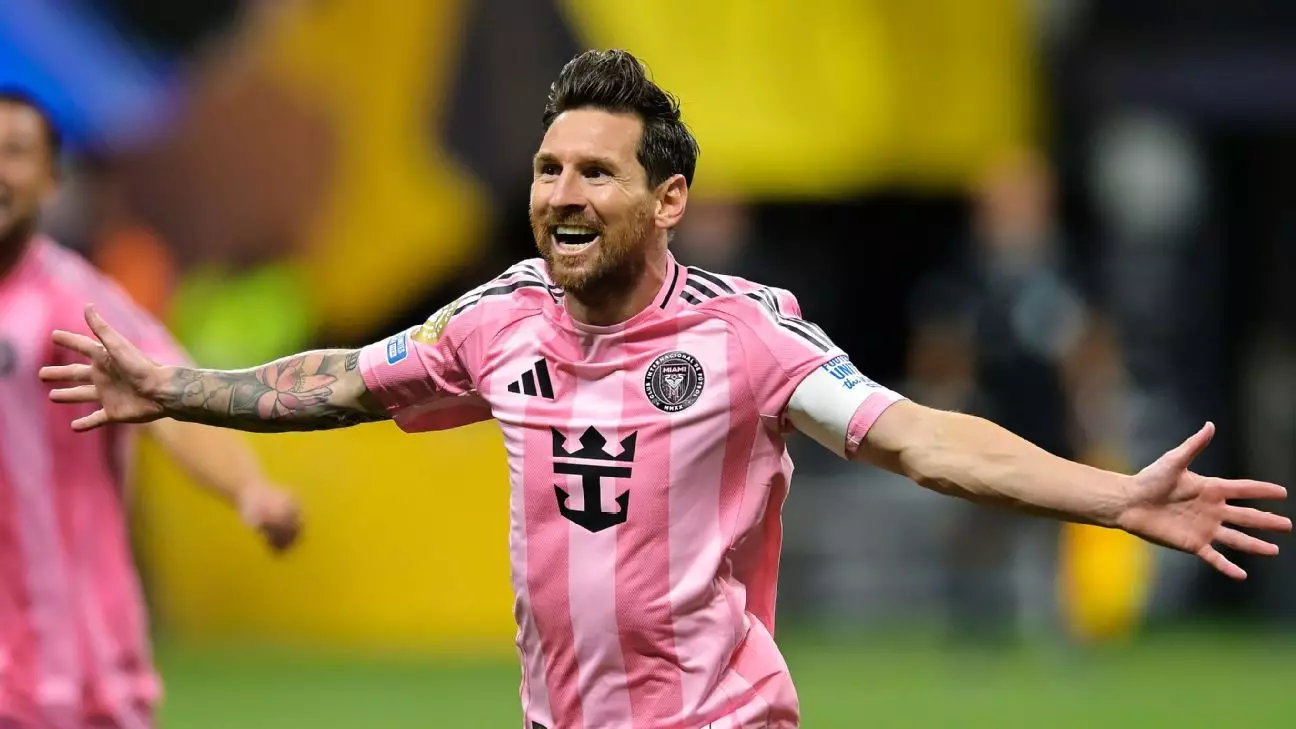Lionel Messi has undoubtedly altered the financial landscape of Major League Soccer (MLS) since joining Inter Miami. For the second consecutive year, he stands supreme as the highest-paid player in the league, boasting a guaranteed compensation of $20.45 million. This astronomical figure signifies not only his skills as a player but also his unparalleled marketability. According to the MLS Players Association, his earnings reflect only his base salary and do not account for the additional revenue streams he garners from lucrative endorsement deals with the likes of Adidas and a revenue-sharing agreement with Apple. This partnership is pivotal as it aligns Messi with a global tech giant, enhancing both parties’ visibility and market reach.
Messi’s contract with Inter Miami, worth up to $150 million over two and a half years, illustrates the potential profitability of employing superstars in less traditional soccer markets like the United States. Having signed the deal in the summer of 2023, Messi’s presence is boosting local attendance, merchandise sales, and overall interest in soccer within the United States. It begs the question of whether Messi’s high salary can eventually be justified through the economic upturn he is bringing to MLS.
Compensation Disparity in the League
The financial hierarchy within MLS paints a stark contrast between Messi and his peers. Following Messi on the salary scale is Toronto FC’s Lorenzo Insigne, with a guaranteed compensation of $15.44 million. This staggering difference underscores Messi’s unique status and suggests a widening economic gulf in the league. Inter Miami’s total guaranteed compensation of $46.84 million also reflects a broader trend where the club is spending significantly more than its competitors. This figure is not just an increment; it exceeds the previous record they set by a notable $5 million.
Other teams fall dramatically short, with Toronto FC and Atlanta United FC trailing at $34.15 million and $27.63 million, respectively. The disparities illustrate a potential issue in competitive balance; while a few teams thrive financially, the majority of the league struggles. This economic chasm could impact team dynamics and overall competition as resources become concentrated among high-spending clubs.
The Growth of Player Salaries
Despite Messi’s extraordinary salary, the broader trends point to substantial growth in player salaries across the league. The average guaranteed compensation jumped to $649,199, marking a 9.22% increase since spring 2024. Similarly, the median salary rose to $339,876, up 10.1% year-over-year. These trends demonstrate that, while Messi’s earnings are elevated, there is a ripple effect benefiting other players as well. A total of 131 players have achieved guaranteed compensation of at least $1 million, reflecting a growing investment in player talent and development.
While MLS has historically had lower wages compared to more established leagues, the current trajectory suggests that the league is maturing. Still, it remains beholden to a rigid salary cap structure that limits teams’ abilities to fully invest in talent. Thus, while the averages are improving, the overarching framework raises questions about sustainability and growth potential.
The Broader Implications of the CBA
The Collective Bargaining Agreement (CBA) established in February 2021 underscores the league’s ongoing evolution. Set to last through the end of the 2027 season, this agreement will significantly impact financial structures, player rights, and salary negotiations in the years to come. The fifth year of the CBA sees increased scrutiny on how resources are allocated among teams, especially as young talent seeks to burst into a league increasingly defined by its superstars.
The stark financial difference among teams, alongside Messi’s record-setting earnings, signals an opportunity for the MLS to reevaluate its economic model. Clubs could benefit from strategies that emphasize talent development, regional marketing, and alternative revenue streams, following Inter Miami’s lead. Ultimately, Messi’s financial footprint not just elevates his team but also exposes essential discussions regarding equality and fair play in MLS.
Messi’s tenure may be seen as a transformative period within the league, but it also exemplifies the growing need for comprehensive strategies to ensure competitiveness while nurturing emerging talents. As the dust settles on Messi’s historical contract, the real challenge for MLS will be maintaining balance and fostering a rich soccer culture capable of nurturing future stars.

